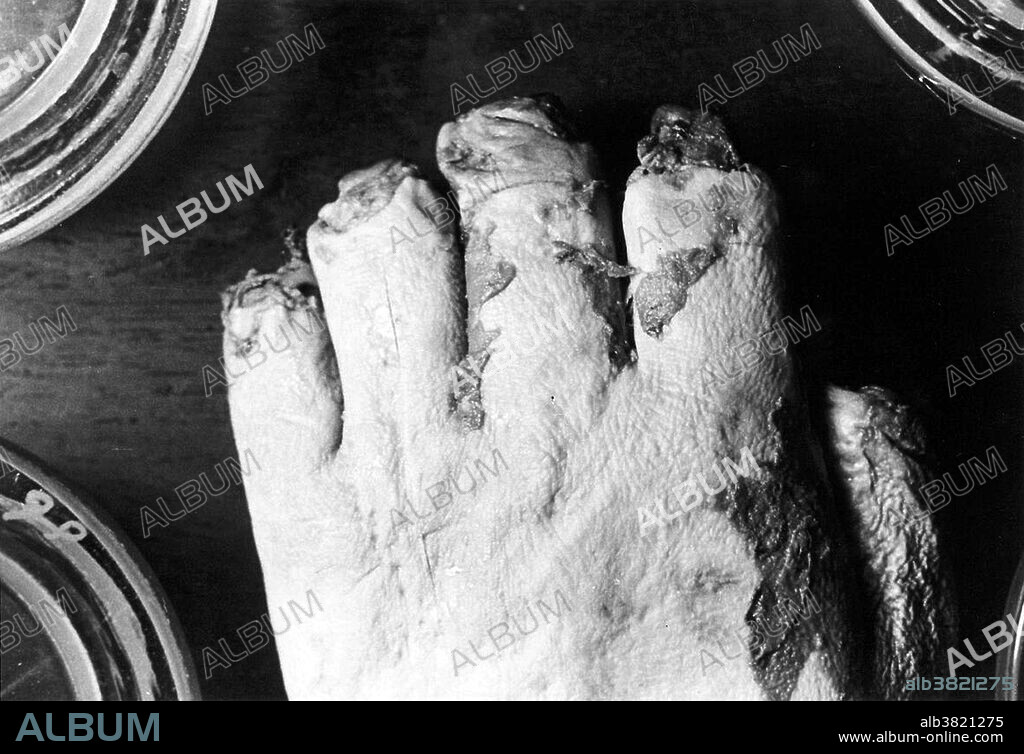alb3821275
Hand of Victim, Buck Ruxton Murder Trial

|
Añadir a otro lightbox |
|
Añadir a otro lightbox |



¿Ya tienes cuenta? Iniciar sesión
¿No tienes cuenta? Regístrate
Compra esta imagen.
Selecciona el uso:

Título:
Hand of Victim, Buck Ruxton Murder Trial
Descripción:
Ver traducción automática
The tips of the fingers of the victims were cut off to prevent fingerprint identification, 1935. The skill with which the fingers were mutilated led police to hypothesize that the murderer had anatomical training and knew how to use a scalpel. Buck Ruxton (1899-1936) was a Parsi doctor and murderer who strangled his wife Isabella. In order to prevent their housemaid, Mary Jane Rogerson, from discovering his crime before he could dispose of the body, he suffocated her too. Ruxton then proceeded to dismember and mutilate both bodies to hide their identities. The case is remembered now for the innovative forensic techniques employed in solving it. The bodies were identified using the fledgeling techniques of fingerprint identification, forensic anthropology to superimpose a photograph over the X-ray of a victim's skull and forensic entomology to identify the age of maggots and thus the approximate date of death. This was one of the first cases where such forensic evidence was successfully used to convict a criminal in the United Kingdom.
Crédito:
Album / NLM/Science Source
Autorizaciones:
Modelo: No - Propiedad: No
¿Preguntas relacionadas con los derechos?
¿Preguntas relacionadas con los derechos?
Tamaño imagen:
3900 x 2668 px | 29.8 MB
Tamaño impresión:
33.0 x 22.6 cm | 13.0 x 8.9 in (300 dpi)
Palabras clave:
1930S • 1935 • 1936 • BLANCO Y NEGRO • CAMPO • CIENCIA • CÓNYUGE • CRIMEN • CULPABLE • ESPOSA • ESPOSO • ESTRANGULADO • ESTRANGULAR • ESTUDIO • FORENSE • HISTORIA • HISTORICO • HUELLA DACTILAR • IDENTIFICACION • IDENTIFICADOR • IMPRESION • INVESTIGACION • INVESTIGAR • MANO • MARIDO • MATANDO • MATAR • MEDICINA • MEDICINAL • MEDICO FORENSE • MUERTE POR ESTRANGULACION • MUTILADA • ORDENAMIENTO JURÍDICO • POLICIAS • S. XX • SIGLO XX • VICTIMA
 Pinterest
Pinterest Twitter
Twitter Facebook
Facebook Copiar enlace
Copiar enlace Email
Email
